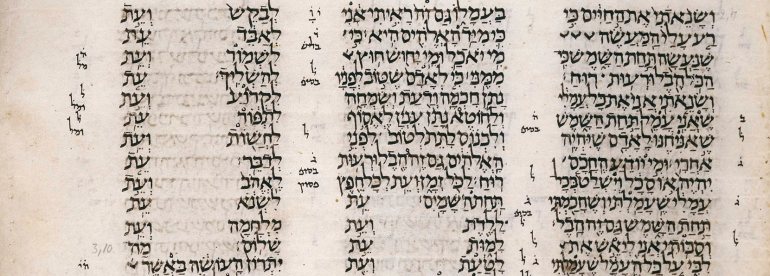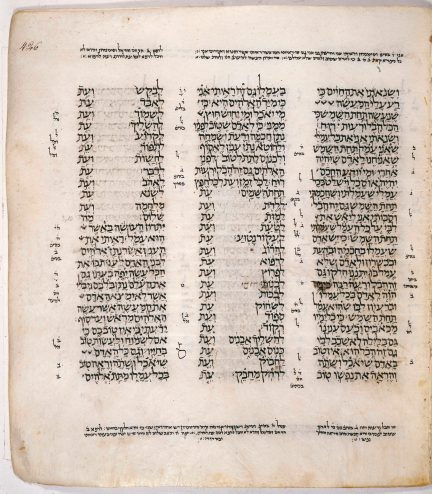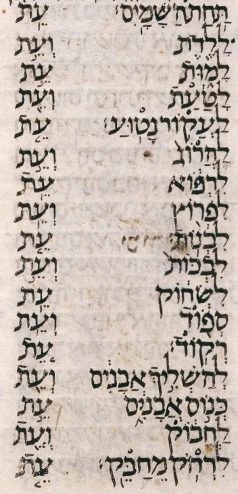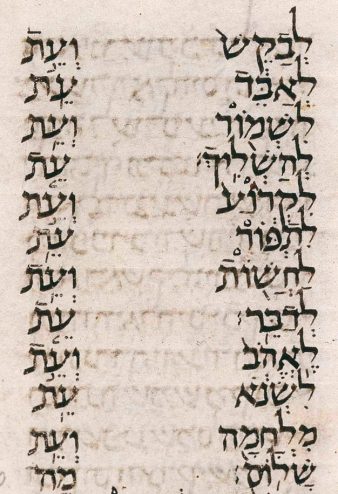The images below are from a page of Ecclesiastes (Qohelet) from the Leningrad Codex, which was hand-written in Cairo in 1008 CE. This is the codex that modern versions of the English Old Testament use as a base (in the printed form known as the Biblia Hebraica Stuttgartensia). It is amazing to me that I can pull this up and study it with a click. What a time to be alive. There is a time and a season for everything under the sun. This is our time.
Spacing of the “Time” Passage
In the section dealing with times under the heavens, the spacing of the layout codex is fascinating with “time” as the last word on a line and then the word which follows, space, time, new line and next word. The left is the Hebrew word for “time”: עת, and Hebrew is read from right to left, so the next phrase is on the right of this column.
In English, the passage would have this layout:
| …under the heavens | a time |
| to give birth | and a time |
| to die | a time |
| to plant | and a time |
| to uproot plantings | a time |
| to slay | and a time |
| to heal | a time |
| to break-through | and a time |
| to build | a time |
| to weep | and a time |
| to laugh | a time |
| of mourning | and a time |
| of dancing | a time |
| to cast away stones | and a time |
| of gathering stones | a time |
| to embrace | and a time |
| to be far from embracing | a time |
| to seek | and a time |
| to destroy | a time |
| to guard | and a time |
| to cast away | a time |
| to rend | and a time |
| to sew | a time |
| to be silent | and a time |
| to speak | a time |
| to love | and a time |
| to hate | a time |
| of war | and a time |
| of peace |



